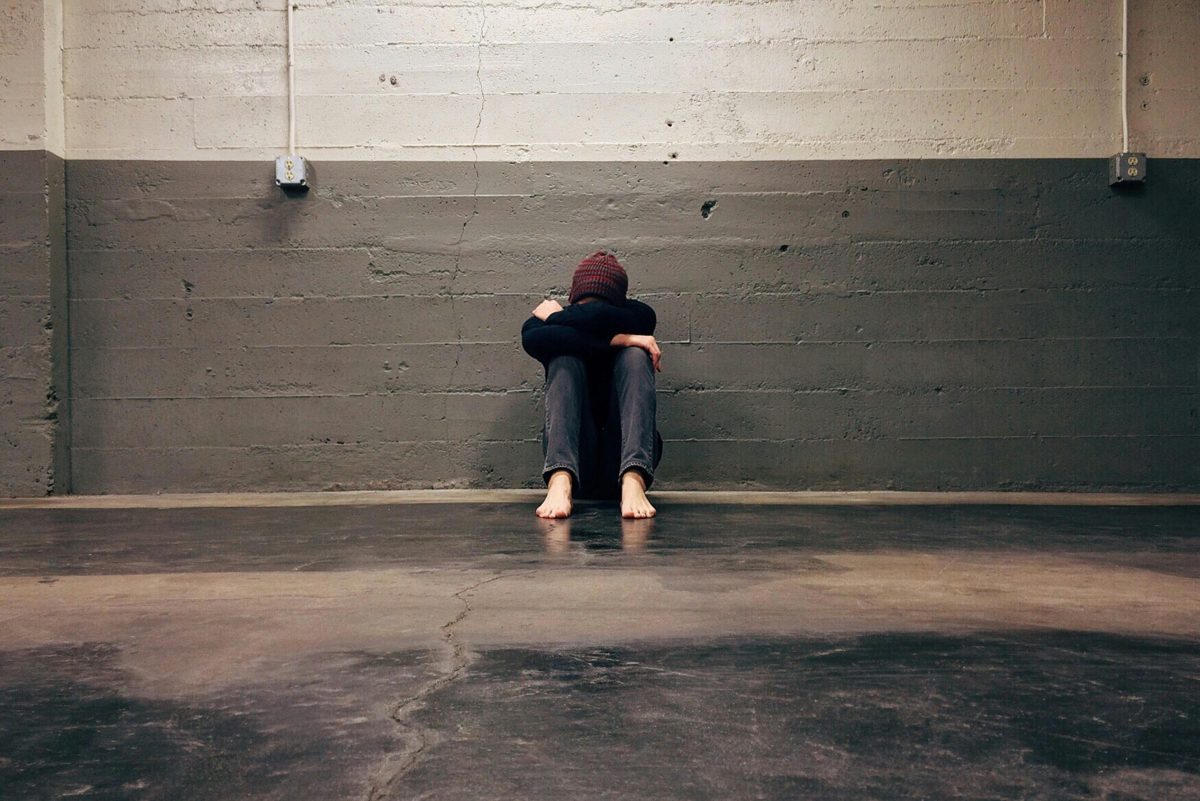Understanding Fears and Anxieties in Childhood

Although they are sometimes used synonymously, fear and anxiety have different meanings, particularly when it comes to young people. Fear is an instantaneous, visceral, and focused reaction to a particular threat. On the other hand, anxiety is a more nebulous feeling of fear about an uncertain future event. Both feelings are typical aspects of growth, but as a child becomes older, they show up in various ways.
- Toddlers may be afraid of strangers or loud noises.
- Children who are in school may experience anxiety related to their academic achievement or social acceptance.
It is impossible to overestimate how these feelings affect a child’s growth. They have the power to affect a child’s capacity for social connection, intellectual interest, and openness to trying new things. Early detection and treatment of these worries and fears can help youngsters become more resilient by teaching them how to manage their emotions and increase their self-assurance in their capacity to overcome obstacles.
It’s critical to comprehend the subtleties of childhood concerns and fears. It gives parents and other caregivers the ability to assist their children appropriately, ensuring that these feelings don’t impede their development but rather help them grow emotionally and learn new things.
Indicators and Symptoms of Behavior
- modifications to sleeping patterns, such as nightmares or trouble falling asleep.
- a rise in clinging behavior or unwillingness to attend school.
- physical symptoms, such as headaches or stomachaches, that frequently have no apparent medical reason.
- an abrupt decline in scholastic achievement or apathy toward once cherished pursuits.
Anxious or fearful emotional expressions
- Youngsters may exhibit atypical withdrawal or excessive sensitivity towards criticism.
- They might show signs of irritability or mood swings that don’t seem appropriate for the circumstances.
- frequent emotional outbursts or sobbing, often in reaction to seemingly little reasons.
Knowing When to Be Worried: Differentiating Between Normative and Dangerous Fears
It’s normal for kids to feel scared and anxious when they face unfamiliar situations. But when these feelings linger for a long time, get in the way of everyday tasks, or result in avoidance behaviors, it’s time to investigate more.
- persistent anxieties that appear exaggerated in comparison to others’ fears.Unrelenting anxieties that do not go away despite assurances.
It’s critical to recognize when fear and anxiety exceed normal limits. It makes early intervention possible, which can greatly enhance a child’s developmental trajectory and quality of life.
Recognizing these indicators and understanding when to get assistance are essential first steps in helping kids overcome their fears and worries. By confronting these feelings head-on, we can help our kids develop resilience and become self-assured, emotionally stable adults.
Fears and Anxieties in Childhood: Causes and Triggers

It is a challenging puzzle to figure out what causes children to experience dread and anxiety; it involves a combination of external, psychological, and environmental elements. Though every child’s experience is different, several similar triggers come to light.
Environment-Related Factors
- Anxiety can be sown by family dynamics, such as parental conflict or inconsistency.
- The importance of the school environment is paramount. Fears might be heightened by bullying, peer pressure in school, or even the simple struggle to fit in.
- A child’s impression of safety and belonging is shaped by their social contacts, whether they are with adults or peers.
The Psychological Aspects
A child’s internal thinking provides an ideal environment for anxieties to grow.
- Anxiety can be induced by traumatic events, which can be personally experienced or learned about through the experiences of others. These experiences can leave a lasting imprint.
- Fears that are more universal can develop from past experiences, such getting lost in a public location.
- Another factor is a child’s temperament; some are inherently more prone to anxiety than others.
The Media and Outside InfluencesChildren in the modern digital age are exposed to a wide range of information, not all of which is helpful.
- Young minds may find it challenging to comprehend ideas that they are exposed to through television, the internet, or even stories that friends tell.
- Scary movies, violent television shows, or even news broadcasts can cause fears in children that, although seemingly illogical, are quite genuine.
A multimodal strategy is necessary to address childhood fears and anxieties, taking into consideration the different environmental, psychological, and external aspects that may be involved. Parents and other caregivers can help their children overcome their anxieties and move toward resilience and emotional well-being by recognizing and comprehending these triggers.
To gain additional knowledge about helping kids overcome their fears and worries, go to the The Australian website Raising Children Network offers parenting guidance.
Expert Intervention and Assistance

Knowing When to Get Help: When Professional Intervention Is Needed
It’s critical to recognize when a youngster needs professional assistance for their fears and concerns. Intervention is necessary when feelings are persistent and interfere with day-to-day functioning, or when reactions appear out of proportion. A child’s developmental path can be dramatically altered by early identification and support, which also gives them the tools they need to successfully control their emotions.
Types of Interventions and Healing
- Children who receive cognitive-behavioral therapy (CBT) are able to recognize and confront unfavorable thought patterns.
- Play therapy is a creative, nonverbal means of expressing and processing emotions for younger children.
- Family counseling involves all members of the family, creating a supportive and understanding environment that helps reduce a child’s anxiety.
Schools and Teachers’ Role in Helping Children with Fears and Anxieties
Children’s assistance is greatly aided by schools and teachers. Their ability to establish a secure and welcoming atmosphere can aid in lessening the effects of worries and anxiety. Educators who have received training in identifying anxiety symptoms can offer prompt assistance, directing kids to suitable resources. Additionally, schools can put in place initiatives that support resilience and emotional intelligence, giving kids the tools they need to deal with their anxieties.
Helping kids overcome their fears and worries requires knowing when and how to get professional assistance. Children can develop emotional self-awareness and a solid basis for future emotional health and confidence by learning how to manage their emotions with the correct treatments and support systems in place.
Instructing Coping Mechanisms and Resilience-Enhancing Methods
- Practice deep breathing exercises or picture a safe spot in your mind.can dramatically lower anxiety levels.
- Teaching kids to rise to challenges head-on and accept that setbacks are a necessary part of learning and development is an important aspect of building resilience.
The Significance of Positive Reinforcement and Gradual Exposure
Children learn that most of the time, their concerns are unwarranted when they are gradually exposed to dreaded circumstances in a safe and encouraging environment. Their confidence is bolstered by this technique in conjunction with positive reinforcement for courageous behavior. It’s important to acknowledge little accomplishments because it gives them confidence that they can conquer their worries gradually.
Parental Modeling’s Significance in Handling Fears and Anxieties
Youngsters often emulate their parents’ emotional reactions. Parents offer a great example when they confidently and calmly manage their own fears. Teaching kids good coping techniques, like taking deep breaths under pressure or having an honest conversation about their anxieties, helps them learn how to control their own emotions.
Methods to Reduce Exposure to Superfluous Stressors
- Reducing exposure to unneeded stressors, like adult discussions about money or world disasters, can help avoid developing new worries.
- Cutting back on excessive stress also requires carefully selecting the material that children watch to make sure it is appropriate for their age.
Promoting an Empathy and Understanding Culture in the Family and Community
It is crucial to establish a space where emotions are freely expressed and acknowledged. Encourage youngsters to voice their anxieties without fear of condemnation. This strategy builds empathy, not only within the home but as a value children bring into their communal contacts. Empathy and compassion from peers and adults alike can considerably relieve a child’s anxiousness.
By adopting these tactics, we can assist our children through their fears and worries, giving them with the resilience to confront life’s obstacles. This not only promotes their emotional growth in the now but builds a strong foundation for their future well-being.
In Conclusion
Childhood fears and worries are navigable roads to resilience. This journey, albeit laden with problems, ultimately creates a great sense of empowerment and emotional well-being. By identifying the sources of these worries, embracing professional help, and adopting tailored coping mechanisms, we provide our children with the tools to tackle life’s uncertainties with confidence. Let us pledge to assisting our young ones through their worries, towards a future full with potential and devoid of unnecessary anxieties. Together, we can transform fear into a stepping stone for growth and discovery.
Addressing Childhood Fears and Anxieties FAQs
Children typically begin to outgrow their fears around the age of 7 to 9 years old, as they develop a better understanding of the world around them and can distinguish between reality and fantasy. However, the age can vary significantly from one child to another and depends on the child’s experiences, temperament, and how their fears are addressed. Encouraging open communication and problem-solving skills can aid in this transition.
Yes, untreated childhood fears can sometimes escalate into anxiety disorders, especially if the child has a predisposition to anxiety or there is a family history of anxiety disorders. Early intervention and support can prevent fears from becoming more severe. Seeking professional help when fears persist or interfere with daily life is important for the child’s mental health.
Cognitive-behavioral therapy (CBT) can help children with fears and anxieties by teaching them to identify and challenge their fearful thoughts and to develop healthier coping mechanisms. This evidence-based approach involves both cognitive and behavioral techniques tailored to the child’s specific fears. CBT is highly effective in reducing symptoms of anxiety and improving the child’s quality of life.
Parents can differentiate between normal childhood fears and signs of a more serious problem by observing the intensity, duration, and impact of the fear on the child’s daily life. Normal fears are typically transient and do not significantly interfere with the child’s activities, whereas more serious problems persist and affect the child’s ability to function normally. Consulting with a pediatrician or a child psychologist can provide clarity and guidance on how to best support the child.
Parents can help alleviate their child’s fears by listening to their concerns, providing reassurance, and gradually exposing them to their fears in a controlled and supportive environment. This approach helps build the child’s confidence and coping skills. It’s important for parents to remain patient and understanding, as overcoming fears is a process.
Schools contribute to managing childhood fears by providing a structured and supportive environment where children can learn coping strategies and build resilience. Teachers and school counselors can play a key role in identifying children who may need extra support and in implementing programs that promote emotional well-being. Collaboration between schools and parents is vital in addressing and managing childhood fears effectively.
Common childhood fears and anxieties include fear of the dark, separation anxiety, fear of strangers, and fear of animals. These fears are a normal part of development and often stem from the child’s growing awareness of the world and their imagination. Understanding and addressing these fears early can help in managing them effectively.
Signs that a child’s fear has turned into an anxiety disorder include persistent worry that interferes with daily activities, physical symptoms like headaches or stomachaches, and avoidance of situations that trigger the anxiety. These symptoms are more intense and lasting than typical fears and require professional evaluation. Early diagnosis and treatment are crucial in helping the child manage anxiety.
Play plays a crucial role in addressing childhood fears, as it allows children to express their feelings, practice coping strategies, and gain mastery over their anxieties in a safe and controlled environment. Through play, children can explore their fears at their own pace and learn to overcome them with the support of caregivers or therapists. This method is particularly effective with younger children who may not be able to articulate their fears verbally.
Media consumption can play a significant role in childhood fears, as exposure to frightening or inappropriate content can exacerbate or create new anxieties. It’s crucial for parents to monitor and guide their child’s media use, choosing age-appropriate content and discussing any fears that arise. This can help mitigate the impact of media on a child’s fear and anxiety levels.

